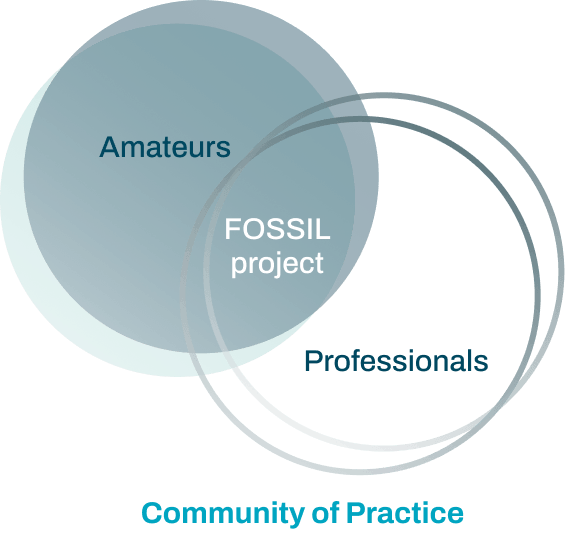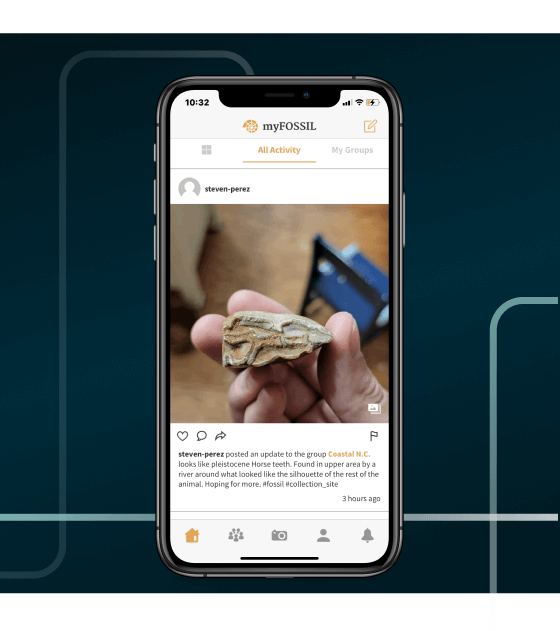The Social Paleontology App That Changed The Way Fossils are Shared
University Researchers and Educators Invent “Social Paleontology” and Digitally Bring Fossils to the Community at Large.
Description
myFOSSIL bridges the gap between amateur fossil collectors and professional paleontologists using technology to blend social networking, education and scientific research.
Project Summary/Initial Need
When the Florida Museum of Natural History at the University of Florida reached out to us, they were looking to develop a web based social media platform to help facilitate the 5-year mission of the FOSSIL project: to create a community of practice between amateur fossil collectors and professional paleontologists. What evolved from that initial mission is a social paleontology network known as myFOSSIL that has taken on a life of its own well beyond its initial 5-year timeline. This project was funded by the National Science Foundation (Grant No. DRL-1322725.)

Our Role/How We Were Involved
We have proudly been involved as the software developer for the myFOSSIL from the very beginning. The FOSSIL project team came to us with an idea to connect groups of amateur fossil collectors, local paleontology groups and researchers/professional paleontologists on a common platform. While the FOSSIL project team had the unique idea to create such a platform, they needed our assistance to make it a reality. Beginning with a mobile-optimized website, our teams worked together to find the best way for these amateur paleontologists to learn about paleontology, connect with other members and groups, and digitally catalog their own findings. From there, the FOSSIL project team leaders—which include scientists from the Florida Museum of Natural History and the University of Florida College of Education—asked us once again to innovate in the name of science. From that challenge, the myFOSSIL mobile app was born. Instead of simply transferring the myFOSSIL website to app form, our team created an “Instagram for Fossils.” Taking cues from popular social networks like Facebook, Twitter, and Instagram, myFOSSIL features an image-forward feed with photos from amateur fossil finds around the world. The ability to take myFOSSIL on the go makes for easier photo uploads and increases engagement among users. The mobile app was designed to capture the essence of a group fossil excursion, including the people and experiences as well as the fossils encountered during an excursion. All the interaction is preserved in the myFOSSIL app and website to help other members learn and enjoy.

The Challenge
Prior to myFOSSIL’s inception, there was little national coordination between the many amateur paleontology clubs and groups in existence. Not to mention the many individuals, K-12 teachers and other educators who can learn from and make contributions to fossil research and identification. While there was no question about the benefit of amateurs being involved in paleontology, there wasn’t a clear path for how to bridge the gap between these “citizen scientists” and professionals. Our challenge was not only to create the digital infrastructure for myFOSSIL from the ground up, but also to collaborate with the FOSSIL team to build a digital curation process to assist amateurs in contributing their digital specimens to the professional community for research.
The Result
When reflecting on the initial scope of the project, it’s rewarding to our team to see how the myFOSSIL website and app have been adopted by so many people with a common love of paleontology. What started out as a 5-year mission to create a community of practice comprised of amateurs and professionals who are interested and engaged in the practice of paleontology has lived well beyond the initial time frame with no signs of stopping. The classification database that was created by our team has grown to nearly 8,000 specimens identified and uploaded. The myFOSSIL app remains the only social paleontology resource for amateur and professional paleontologists, and our team is thrilled to continue to be a part of it. In addition to more than 8,000 participants on the myFOSSIL website, the digital curation process of uploading photos and associated scientific data has successfully transferred over 1,000 digital specimens to the iDigBio research provider.


